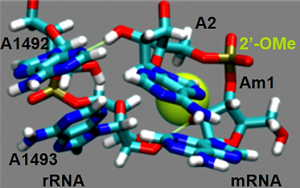Biofilm-associated Gram-positive bacteria have been found to cause infections in patients with heart and orthopedic implant devices and quickly become resistant to antibiotics. Pharmaceutical industries have previously focused on drugs that bind to proteins and inhibit protein synthesis when developing new drug targets. However, targeting RNA for antibiotic discovery may be another way to stop bacterial infections.
As multidrug-resistant pathogens continue to be a threat, the T-box system found in the 5’ untranslated region (UTR) of Gram-positive bacteria mRNA, which encodes aminoacyl-tRNA synthetase genes crucial for bacteria survival, is a promising RNA target for small-molecule antibiotics. The target site is found in many of the most drug-resistant pathogens, as well as across multiple T-boxes within the bacteria, reducing the chances of bacteria mutating and becoming resistant to a small-molecule antibiotic designed to bind to the highly conserved specifier loop within Stem 1 of the 5’ UTR.
The binding of one small molecule could block transcription of multiple critical genes at once by preventing the initial interaction of the tRNA anticodon to the specifier sequence through a conformational change, which would be lethal for the bacteria. Therefore, to determine the feasibility of using the T-box system as an antibiotic target, we are identifying possible antibiotic compounds and analyzing its binding interactions with Gram-positive bacteria mRNA constructs. Out of over 280,000 small molecules screened, PKZ18 was identified based on its ability to bind to the specifier loop and demonstrated antibacterial activity specifically against Gram-positive bacteria.
Identification of new intervention targets against pathogens is necessary to prevent the emergence of antibiotic-resistant infections. Studying how bacterial mRNA stability is affected by possible small-molecule antibiotics in this project will provide insight for us to understand how to optimize this interaction as a treatment method against antibiotic-resistant Gram-positive pathogens.






